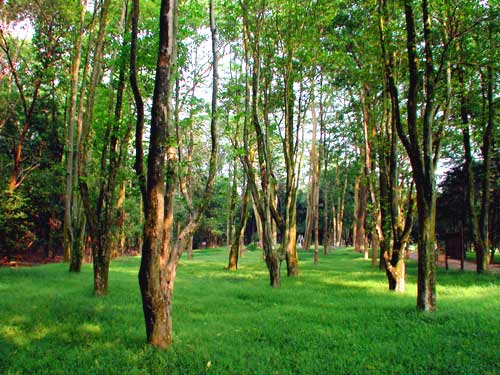Science is built on unbiased observation ... and I have seen a few things during these last shutdown weeks that have me sitting up and taking notice. Relaxing in my easy chair early every morning drinking my coffee, I have watched the Spring advance from my same observation spot for a number of years. I can see, through our big glass doors how the sun-rise position inches across the horizon from South to North.
Today this bright sunlight is not filtered through our big silver maple tree leaves behind our house ... like in prior years ... and so I have noticed something interesting this year —- the leaves are still in bud ... whereas in previous years at this time, they were in full large healthy green leaves when then I didn’t have to shade my eyes in the brightness. Now I do. Why are things different this year?
Because of the coronavirus lockdown, there is virtually no air traffic ... and very little car traffic. So this must mean substantially less carbon dioxide is being emitted. How much less is uncertain., but I would love to have a number. And, if Al Gore is right, this would be resulting in cooler temperatures. Yes, Spring does seem a little late this year ... but is something else also at work?
Are the trees still in bud because things might be slightly cooler? Or is it because they have not as much to eat? Maybe, just maybe, our flora has gotten used to a groaning larder of CO2 food ... and now we have put them back on a starvation diet? And that is why Spring has been delayed ... and I must shade my eyes in the early morning ... since the silver maple, out of spite, is not doing its shading job this year.
I don’t think that we realize how voracious feeders plants and trees are. With the advent of mankind burning hydrocarbons, we have put much more CO2 into our atmosphere,. Yet our flora is gobbling it up almost as fast as we can produce it. Carbon dioxide, at its low point, was about 0.03% of what we breath ... despite all we many animals exhaling this gas ... and our burning wood and coal to cook and stay warm. Now, burning oil and natural gas have put much, much more CO2 out there ... but our flora keeps digesting it almost as fast as we make it. Its concentration has risen to only about 0.04% (up 10 parts per million) ... showing how hungry our plants are. And, of late is now temporarily going back down because of the coronavirus halting travel.
Bottom line: Why are we spending billions on developing carbon sequestering technologies when Mother Nature has already given us one — flora, hungering to be fed CO2. Just plant a whole bunch more fast-growing trees.



7 comments:
Interesting observation about the delay in leaves on the deciduous trees. I have noticed the same thing here in Westchester county.
Interesting thought, George. Can one calculate how many acres of extra forest is needed to absorb the extra CO2? (And of course make up for the trees that are cut down?) Axel
If we want to put our flora back on a starvation diet (30 parts per million of CO2) my guess is we would need to expand things (mainly trees) by 25%. But I’m not sure we want to do this. Can you imagine going to dinner where only 40 items out of a million were real food? My motto is: Carbon Dioxide is our friend!
Geo.
Errata: I was off by a factor of 10. The modern range of CO2 in our atmosphere has been between (roughly) 300 parts per million and 400 ppm. Still pretty lean, no? Back hundreds of million years ago it was at least 10 times higher ... and our planet didn’t burn up.
Balderdash! The buds that have not leafed out no nothing about CO2. They respond to soil temp, and warmth — not on average but in bursts. I recall a few years having apple blossoms in March. The maples respond to a few days of 70 degrees as do the birches. The oaks and plane trees wait for 80 degrees. Further, an abundance of CO2 makes for thicker leaves to an extent but not necessarily growth, much like lard and fats help expand human waistlines. I think that the trees might like to run lean — it encourages growth.
Sounds like you know your stuff ... except for your last observation.
Average is the issue. In Brazil the Forrest’s have been the lungs of the world. Now they clear cut the tree for farming. The soul is thin and weak so after a couple of years they repeat the process in a new place. I think they have cut over half trees. It is corporate agriculture. Their President was insensed when challenged on this policy. I think a large percentage of the agricultural products are sold outside of Brazil. They are not the only ones doing it.
Post a Comment